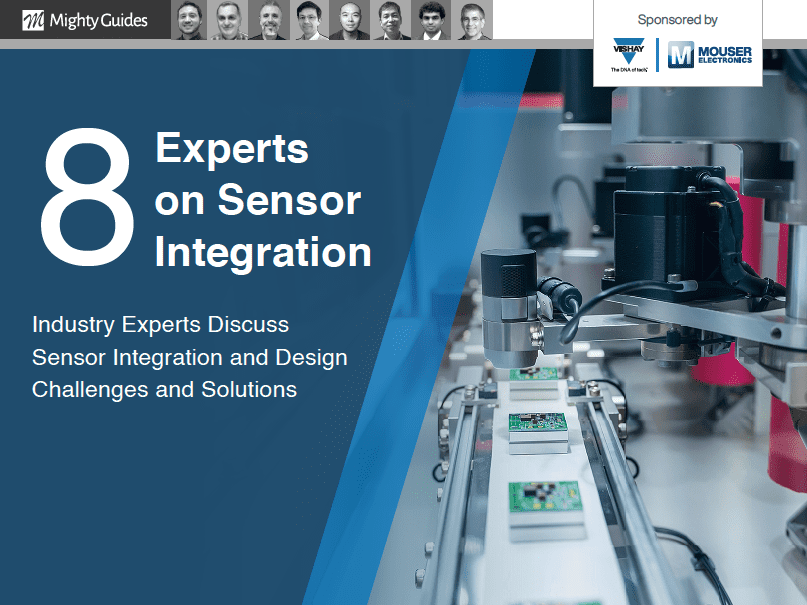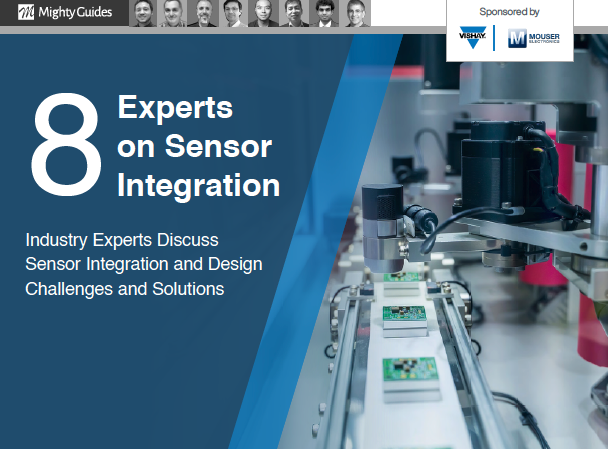- Samy Ahmed, Senior Manager, Application Engineering, Vishay Intertechnology
- Alain Stas, Product Marketing Engineer, Vishay Non-Linear Resistors
- Olivier Gaston, Product Marketing Manager, Sfernice Vishay
- Emmanuel Lemelle, Senior Manager, Product Marketing, Sfernice Vishay
- Ray Yu, Sr. Engineering Manager
- Philip Li, Device Physicist, Director, Sensor Technology Development, Pacific Biosciences
- Shyam Sundar B T, Lead Electrical Product Engineer, Hanon Systems
- Mike Donnelly, Principal Engineer, Siemens
8 Experts on Sensor Integration was generously sponsored by Vishay and Mouser Electronics.
Sensors are everywhere. A sensor can be defined as any device that can detect a change in its environment and provide useful information in response. Sensors come in many different forms, leveraging different working principles to achieve a variety of use cases. Optical and electrical sensors are most prevalent, with popular use cases including temperature, optical (e.g., photodiodes), and position sensing.
With the rise of intelligent, interconnected devices through the Internet of Things (IoT), all aspects of our lives and industry are becoming more reliant on sensor technology. Sensors lie at the heart of many of today’s transformative technologies such as Machine Learning, Industry 4.0, smart homes, and electric vehicles.
Yet, this increased reliance on sensors creates new challenges for designers. Attempting to understand and balance the electrical, mechanical, thermal and sometimes optical characteristics of a sensor while achieving high performance for a given application has become a significant design challenge.
This eBook explores the challenges that design engineers face when designing with sensors and integrating sensors into their systems. Read on to see how Vishay Intertechnology provides engineers with design, simulation, modeling, and prototyping tools to help address these challenges and ease the design process.




